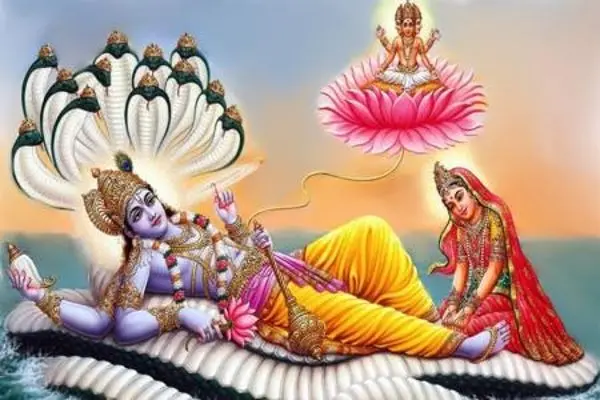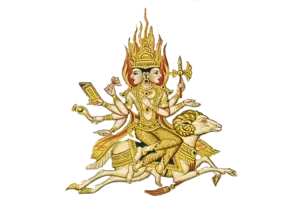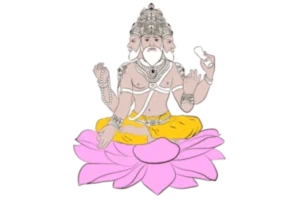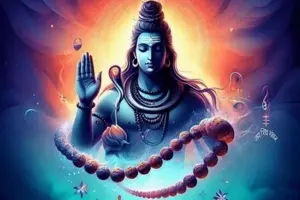
deities
Vishnu
Abstract
Lord Vishnu, protector of universe, is considered part of trinity in Sanatan religion
Vishnu is depicted with four arms, each holding symbolic objects:
Conch (Shankha): Represents the primordial sound and the creation of life.
Discus (Chakra): Symbolizes the mind, dharma, and the destruction of evil.
Mace (Gada): Represents strength and protection.
Lotus (Padma): Signifies purity, beauty, and spiritual enlightenment.
He is usually shown with a crown and adorned with jewels, symbolizing his divine status and his role as the protector of the cosmic order. Vishnu’s vehicle (vahana) is Garuda, a majestic eagle-like bird, representing his dominion over the skies and his swiftness in delivering justice.
Vishnu is often depicted as a benevolent and regal god who manifests on Earth through various avatars (incarnations) to restore balance and address cosmic issues. These avatars are known for their diverse forms and significant roles in Hindu mythology:
Matsya (Fish): Vishnu’s first avatar, Matsya, saved humanity from a great deluge, preserving the sacred scriptures and guiding the king Manu's ark to safety.
Kurma (Tortoise): In this form, Vishnu supported Mount Mandara during the churning of the ocean (Samudra Manthan), which was essential for obtaining the nectar of immortality (amrita).
Varaha (Boar): Vishnu assumed the form of a boar to rescue the Earth (Prithvi) from the demon Hiranyaksha, who had submerged it in the cosmic ocean.
Narasimha (Half-Man, Half-Lion): Vishnu took on this fearsome form to protect his devotee Prahlada from the demon king Hiranyakashipu, who was immune to being killed by man or beast.
Vamana (Dwarf): In this incarnation, Vishnu appeared as a Brahmin dwarf who subdued the demon king Bali, who had gained control over the three worlds, by requesting three paces of land and then expanding to cover the entire universe.
Parashurama (Warrior with an Axe): Vishnu manifested as Parashurama, a Brahmin warrior with an axe, who eradicated the corrupt Kshatriya rulers who had overstepped their bounds.
Rama (Prince of Ayodhya): Rama, the hero of the Ramayana, embodies the ideals of virtue and righteousness. His quest to rescue his wife Sita from the demon king Ravana is a central narrative in Hindu mythology.
Krishna (Compassionate and Loving Statesman): Krishna, a key figure in the Mahabharata and the Bhagavad Gita, is celebrated for his divine teachings, playful exploits, and role as a guide to Arjuna in the epic battle of Kurukshetra.
Buddha (Spiritual Teacher): Some traditions include Buddha in the Dashavatara, recognizing him as an incarnation of Vishnu who appeared to teach compassion and non-violence.
Kalki (Future Warrior): The future avatar Kalki is prophesied to appear at the end of the current age of darkness (Kali Yuga) to restore righteousness and end the cycle of corruption and decline.
These avatars highlight Vishnu’s role as a protector and restorer of cosmic balance, demonstrating his ability to manifest in different forms to combat evil and maintain righteousness (dharma).Vishnu is worshipped across India and beyond by millions of devotees, known as Vaishnavas. Some of the most significant temples dedicated to him include the Tirupati Balaji temple in Andhra Pradesh, Badrinath in Uttarakhand, and Ranganathaswamy temple in Tamil Nadu. His worship emphasizes devotion, adherence to dharma, and living a life of righteousness and balance.
- Vishnu
- Garuda
- Vaishnavas
- Trimurti
- Avatars
- Matsya
- Kurma
- Varaha
- Narasimha
- Vamana
- Parashurama
- Rama
- Krishna
- Buddha
- Kalki


